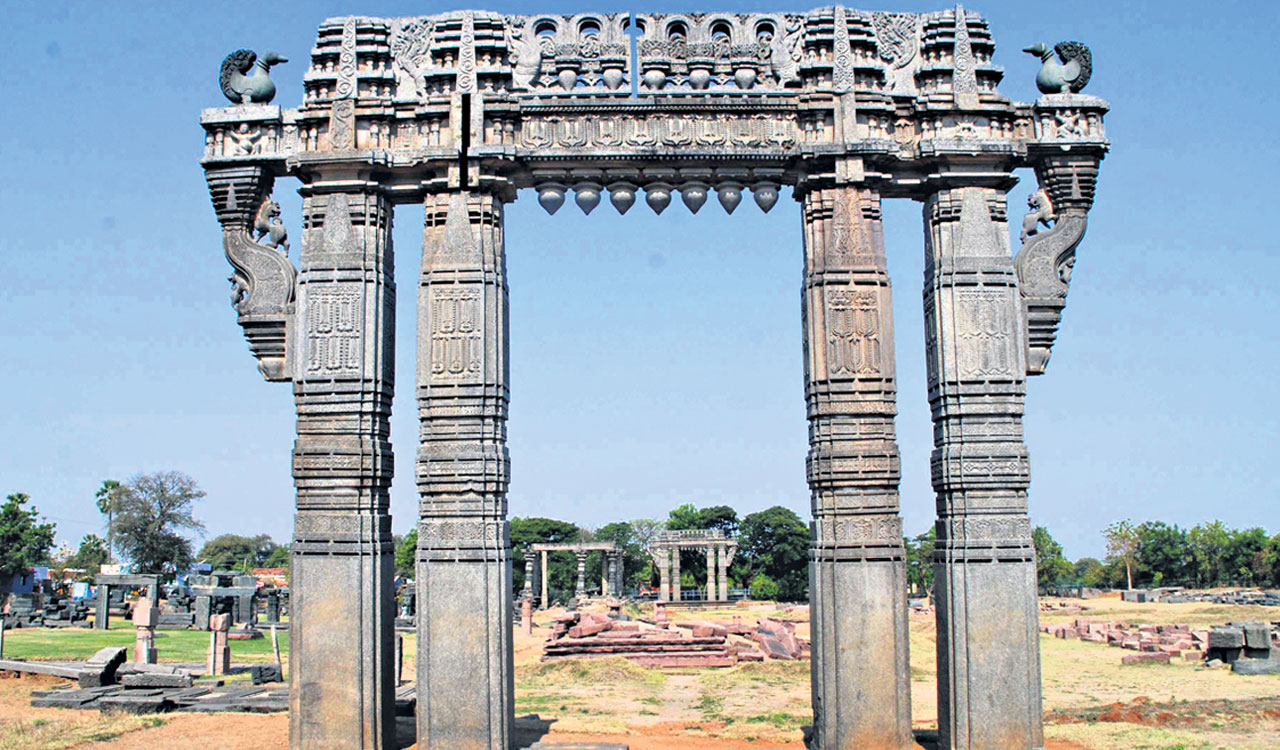They ruled the entire southern part of India from Narmada, Tapti to the Kaveri rivers, for over 160 years
Published Date – 07:20 AM, Thu – 19 October 23

By Dr Mamidi Harikrishna
One of the prominent rulers of South India in medieval times was the Kakatiyas (1163-1323). They ruled the entire southern part of India from Narmada, Tapti to the Kaveri rivers, and have ruled for more than 160 years. The dynasty was founded by Kakatiya Gundyana in the 11th Century and later on by great rulers like Rudra Deva, Ganapathi Deva, Rudrama Devi and Pratapa Rudra etc.
The Kakatiya rulers understood the nature of the Deccan Plateau very well and made the geographical plans accordingly in a more practical, feasible and purposeful manner. They might have done extensive research on the land and introduced a chain system connecting various lakes and ponds in the region and paved the path for revolutionary changes in the irrigation system.
‘3Ts’
The Kakatiyas specialised themselves in ‘3Ts’, viz, temple construction, town planning and tanks. It can be elaborated as tanks, meant for agricultural growth and economic strength, town planning for trade, business and security of the country and temples for creating cultural, religious and educational spaces. This is the great contribution of Kakatiyas to Indian history as a whole, who created a mark of their own.
Warrior queen
The Kakatiya dynasty is also praiseworthy for another reason of making Rudrama Devi (1262-1289) the queen of the great kingdom. The warrior queen was the first woman ruler in India in medieval times who was popular for her stringent decisions, strong administration, unparalleled victories and expansion of the kingdom. The era of Kakatiyas not only by its evolution and expansion but even in the fall, made history, which was unforeseen earlier in India’s history.
India is a subcontinent where innumerable kingdoms with a number of kings have ruled and no king or emperor ever had a chance to rule the entirety of India. It is a common contention that the great rulers of the past, Ashoka, Samudragupta, and Akbar might have ruled the entire land of India what we see today, but it is not true. India had never been under one rule at any point in time as the land had been ruled by too many rulers with their own separate kingdoms. But astonishingly Telangana had become a reason for making all the Southern Indian land under one rule with the fall of Kakatiyas.
Here is an interesting story to tell, the Delhi Sultan, Muhammad bin Tughluq had been written by historians as the ‘king of insanity’. But he is the only king in Indian history, who ruled the land of Southern India except a few parts of present Kerala. All the rulers including the great kings from Magadha times to the Delhi Sultanate had not extended their wings beyond Aravalli and Satpura ranges. But it was Tughluq, who made an invasion in 1323 and defeated Pratapa Rudra-2 of the Kakatiya dynasty and conquered the Kakatiya kingdom.
By conquering the Kakatiya kingdom, the entire southern part of India had come under the rule of the Delhi Sultanate at that time. As such annexation of the Kakatiya kingdom made Tughluq the first to rule Southern India too.

Dr Mamidi Harikrishna



